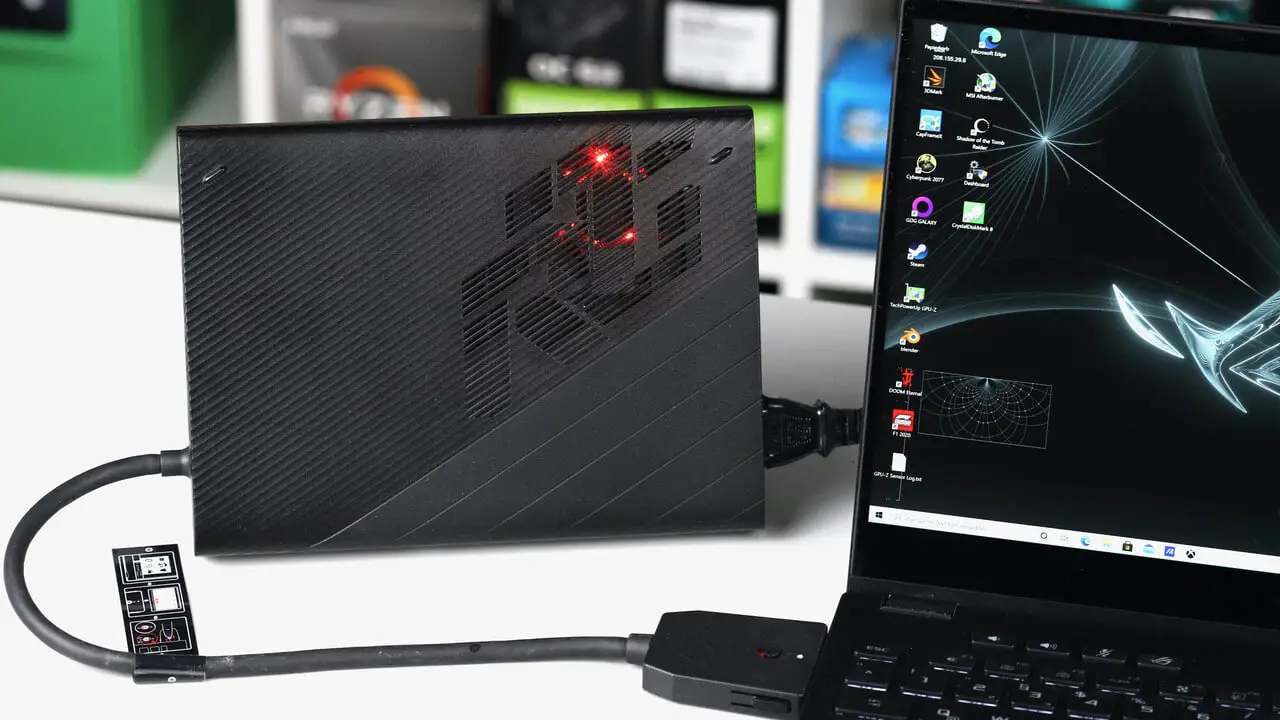Asus ROG Flow X13 with XG Mobile with GeForce 3080 in the test
: Test |CUP | Specs |Config
There are laptops off the shelf and then there are models like the Asus ROG Flow X13 that break with conventions. Asus not only transplanted AMD’s special CPU Ryzen 9 5980HS and a mobile GeForce RTX 1650 into the slim chassis with 2-in-1 function, but also attached a GeForce RTX 3080 with 150 watts via cable.
This is the Asus ROG Flow X13
The ROG Flow X13 is Asus’ first 2-in-1 Gaming-Convertible. 2-in-1 and convertible because the screen can be completely folded backwards by 360 °, which is quite unusual for a gaming system. But that’s not all: with a thickness of 15.8 mm and a weight of just 1.3 kg, it should also be the world’s most powerful convertible of this size. A look at the technical specifications suggests that this classification is correct.
Fast CPU, (dGPU) and eGPU
Asus relies on the new mobile Ryzen 5000 “Cezanne” from the HS series. HS stands for 35 watts again this year. However, according to AMD, the eight-core processors of the HS series can boost up to 54 watts TDP if the temperature and power supply allow it. Asus allows even more in the compact case, as the test will show. 13-inch notebooks are usually more with a U processor and around 15 to 25 watts.
Asus goes even further: not only regular HS CPUs from the new Cezanne family, but also a special model in the form of the AMD Ryzen 9 5980HS with single-core turbo up to 4.8 GHz can be found in the Flow X13. The CPU in the ROG Flow X13 is supported by 8, 16 or a maximum of 32 GB LDPPR4-4266, the M.2-2230 SSD, which is short for space reasons, can be up to 1 TB in size.
Small dGPU with 35 + 5 watts
If you buy the Asus ROG Flow X13 without any additional accessories, you will also receive a dedicated Nvidia GeForce RTX 1650 Max-Q graphics chip with 4 GB of VRAM in addition to the AMD APU. It’s faster than AMD’s Vega graphics unit. Because Asus operates it with the low power consumption of 35 watts approved by Nvidia plus optional 5 watts via Dynamic Boost, the performance gain is only around 100 percent on average over the games tested by the editorial team.
But if you want to operate the Asus ROG Flow X13 as a real mobile gaming PC, you shouldn’t rely on it anyway, but use the ROG XG Mobile accessories with GeForce RTX 3070 laptop GPU or GeForce RTX 3080 laptop GPU, which are exclusively available for the ROG Flow X13. Details at the bottom of this page.
High-quality 13.5-inch display and very good input devices
The 16:10 display with a size of 13.4 inches is available as an FHD solution with 120 Hz or optionally with UHD, the version with the higher resolution was in the test model. With a peak of 381 cd / m² (average: 350 cd / m²), a homogeneity of 88 percent and a contrast of 1350: 1, the display is not only a real eye-catcher in terms of format and resolution, but also in games or when playing An eye-catcher when working in a bright environment. The minimum brightness is 18 cd / m². In addition to the screen, the keyboard and trackpad are also of high quality, although the touchpad could be larger.
The built-in 62 Wh battery should last 18 hours in mixed operation and 10 hours in continuous video playback and is charged via a 100 watt USB-C connector, which is sufficient under load. ComputerBase did not test the battery life as part of the test focused on CPU and GPU performance due to time constraints.
This is the Asus ROG XG Mobile
ROG XG Mobile is Asus’ latest approach to an external GPU. Much more compact than before, external graphics solutions should no longer be limited by the connection, which is why Asus is introducing a proprietary connector as an alternative to the Thunderbolt 3/4 with four PCIe 3.0 lanes (40 Gbit / s), which is usually used in eGPUs. The manufacturer’s proprietary interface is based on PCIe 3.0 x8 and provides 63 Gbit / s bandwidth (57.5 percent more than Thunderbolt) exclusively for graphics. In addition to the PCIe interface, the connection from Asus also includes a classic USB Type-C port according to USB 3.2 Gen 2 with 10 Gbit / s and USB Power Delivery with up to 100 watts, which enables the XG Mobile to be used as a docking device -Station to act. The USB connection is designed as such via Asus’ proprietary connector variant and can therefore be used as normal when the proprietary connector is not connected to the system.
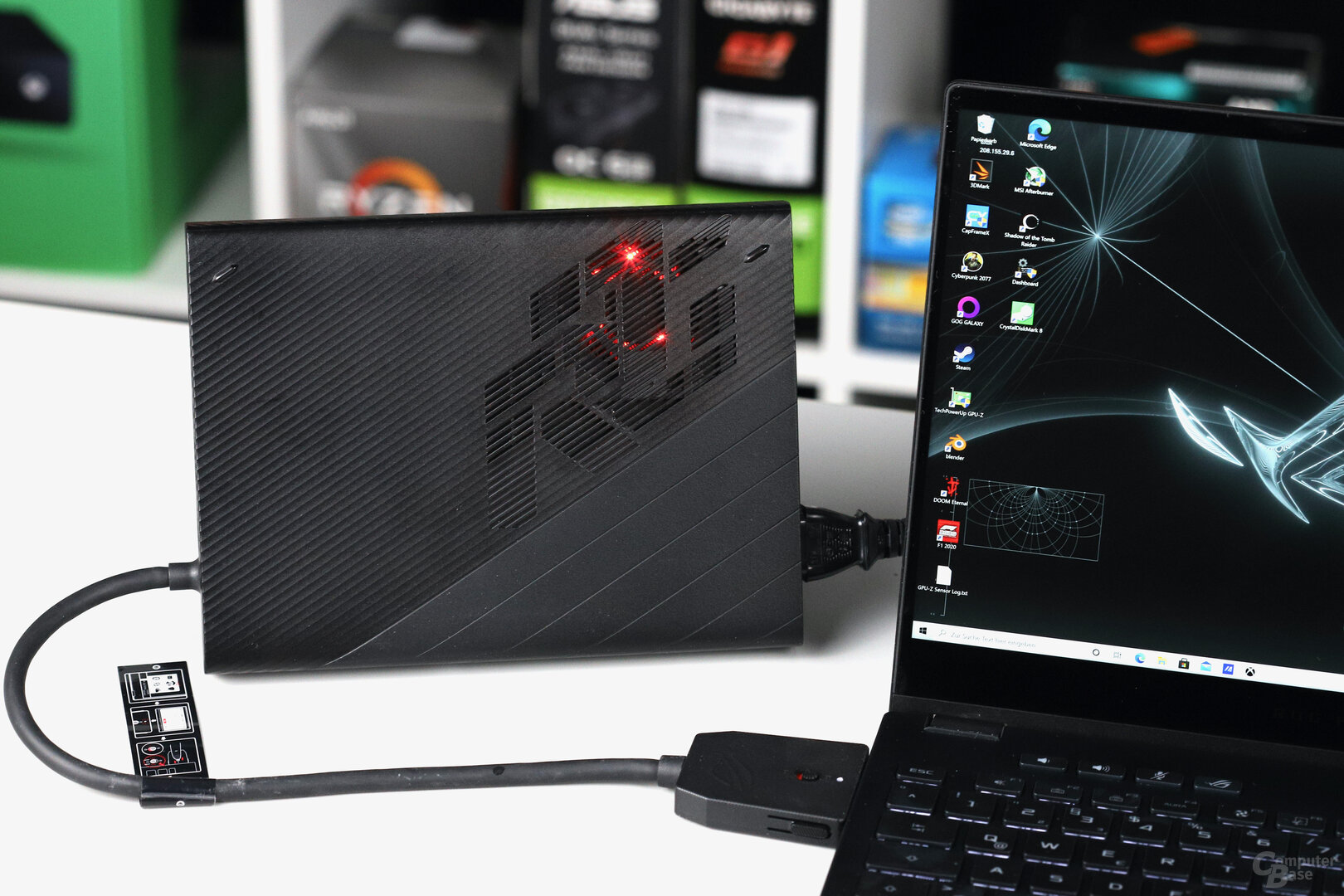
The external ROG XG Mobile contains a GeForce RTX 3080 laptop GPU with 150 watts
image 1 from 2

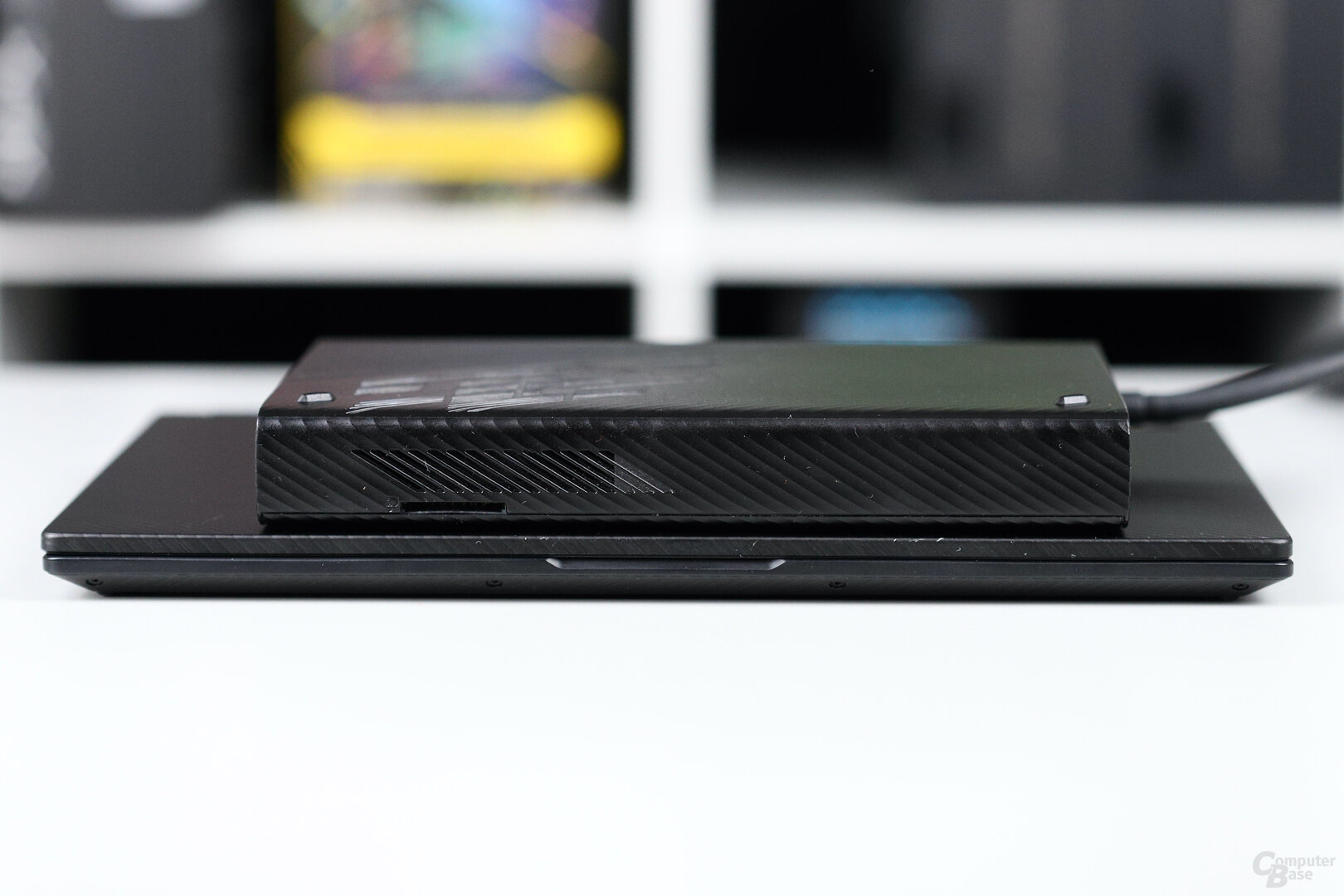
The external housing not only offers space for the mobile GeForce RTX 3000 graphics card and a 280 watt power supply, as an I / O hub it also offers four USB Type A according to USB 3.2 Gen 1 (5 Gbit / s), one SD card slot and a Gigabit Ethernet port. DisplayPort 1.4 and HDMI 2.0a come directly from the GPU. If an external SSD is connected to the external dock, it is not quite as fast as directly on the notebook, but the difference is small.
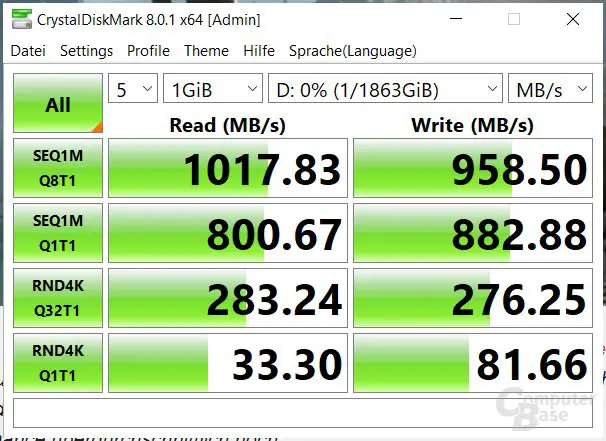
Performance of the WD Black P50 when connected to a notebook
image 1 from 2

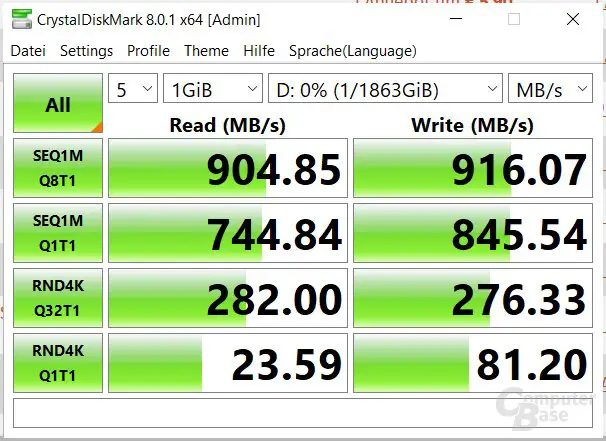
Because the XG Mobile can send up to 100 watts to the notebook via the USB port in the cable, no separate power connection is required when operating the Flow X13 on the station – even under load in games, the 100 watts are sufficient for the hardware used in the notebook including display.
The ROG XG Mobile is available in two versions: With GeForce RTX 3080 laptop GPU and 16 GB RAM at 150 watts TGP and with GeForce RTX 3070 laptop GPU with 8 GB and 125 watts – Nvidia does not allow more.
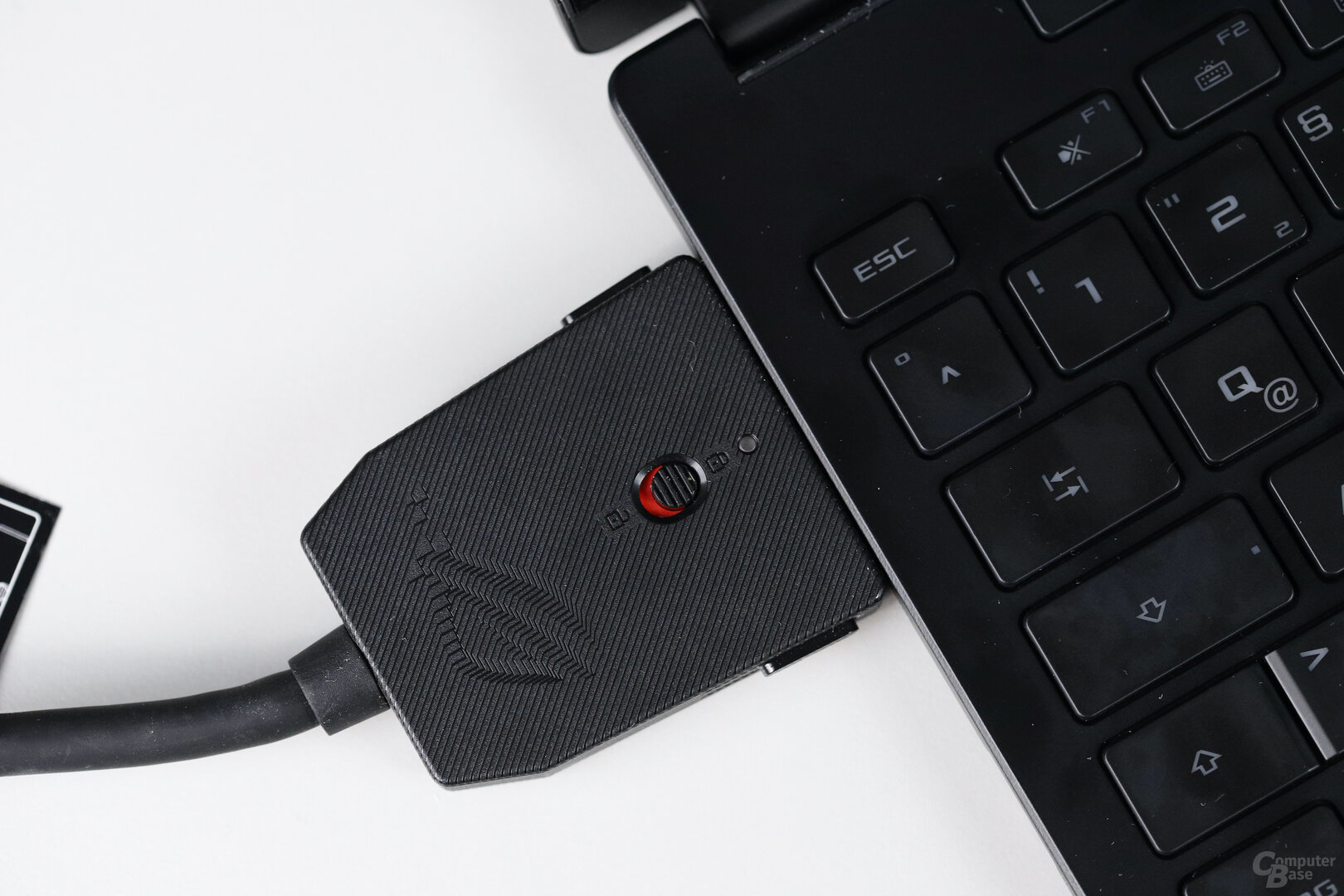
The proprietary connector with locking
image 1 from 2

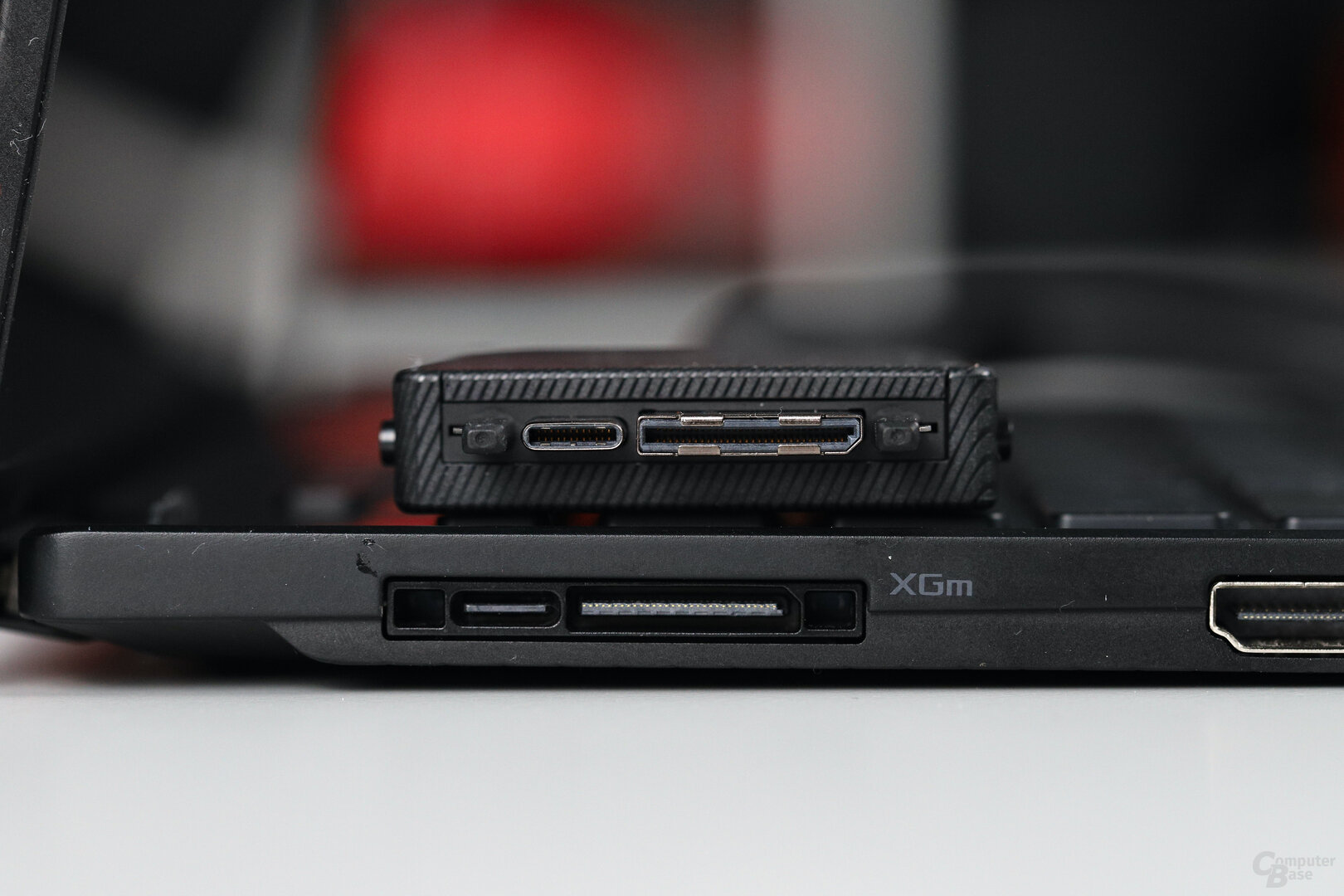
Dynamic Boost is also official. 2.0 implemented, which allows the GPUs up to 15 watts of extra power when the CPU doesn’t need them. The driver confirms the implementation. In practice, however, the mobile GeForce RTX 3080 never saw more than 150 watts. However, it would have been a real surprise if Dynamic Boost 2.0 had worked with the cable solution.
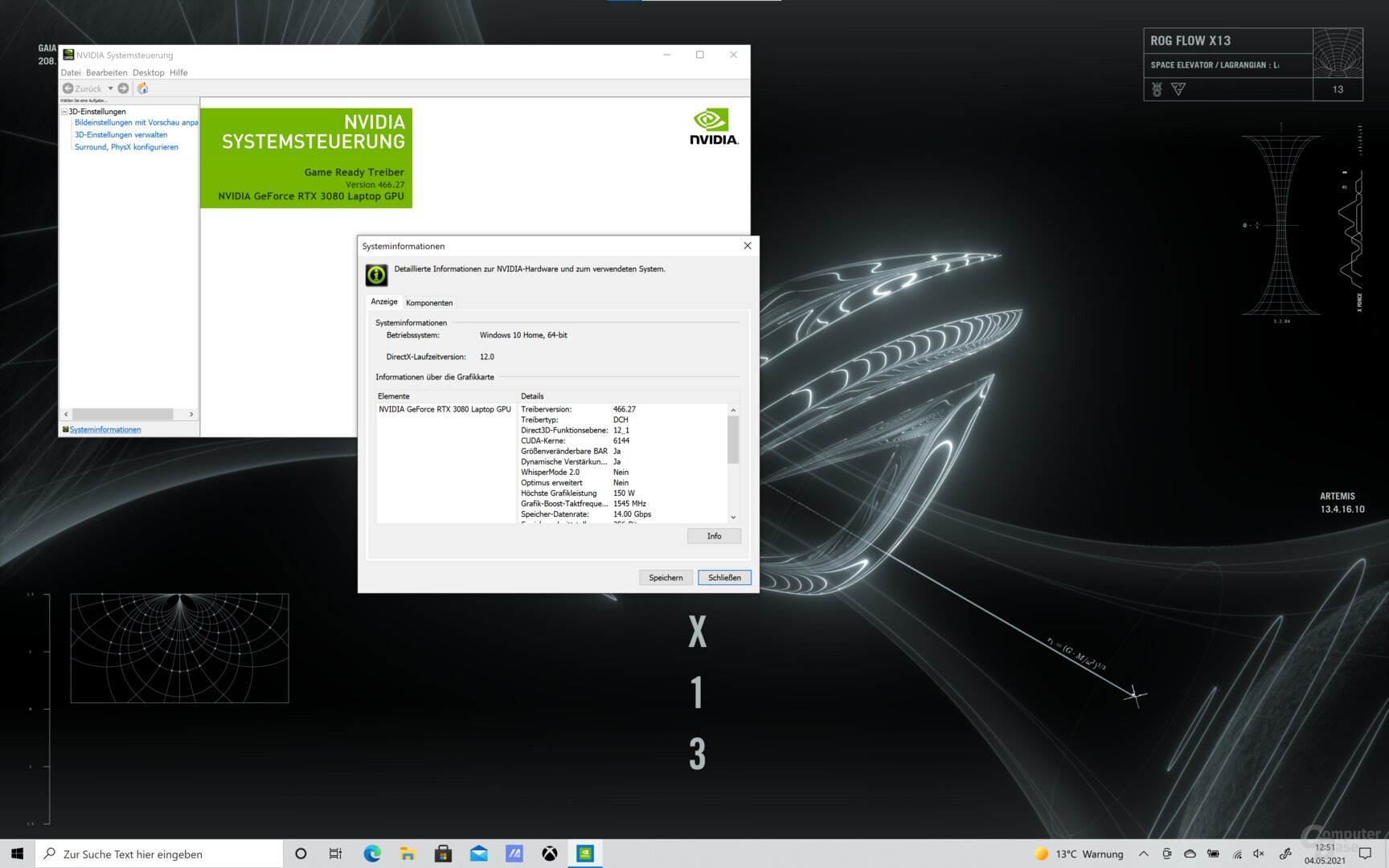
The following table finally shows the available configurations of the GeForce RTX 3000 laptop GPUs with the exception of the GeForce RTX 3050 (Ti) laptop GPU, for which the data has not yet been published. The options available in the Asus ROG XG Mobile are marked in bold.
On the next page: test results





